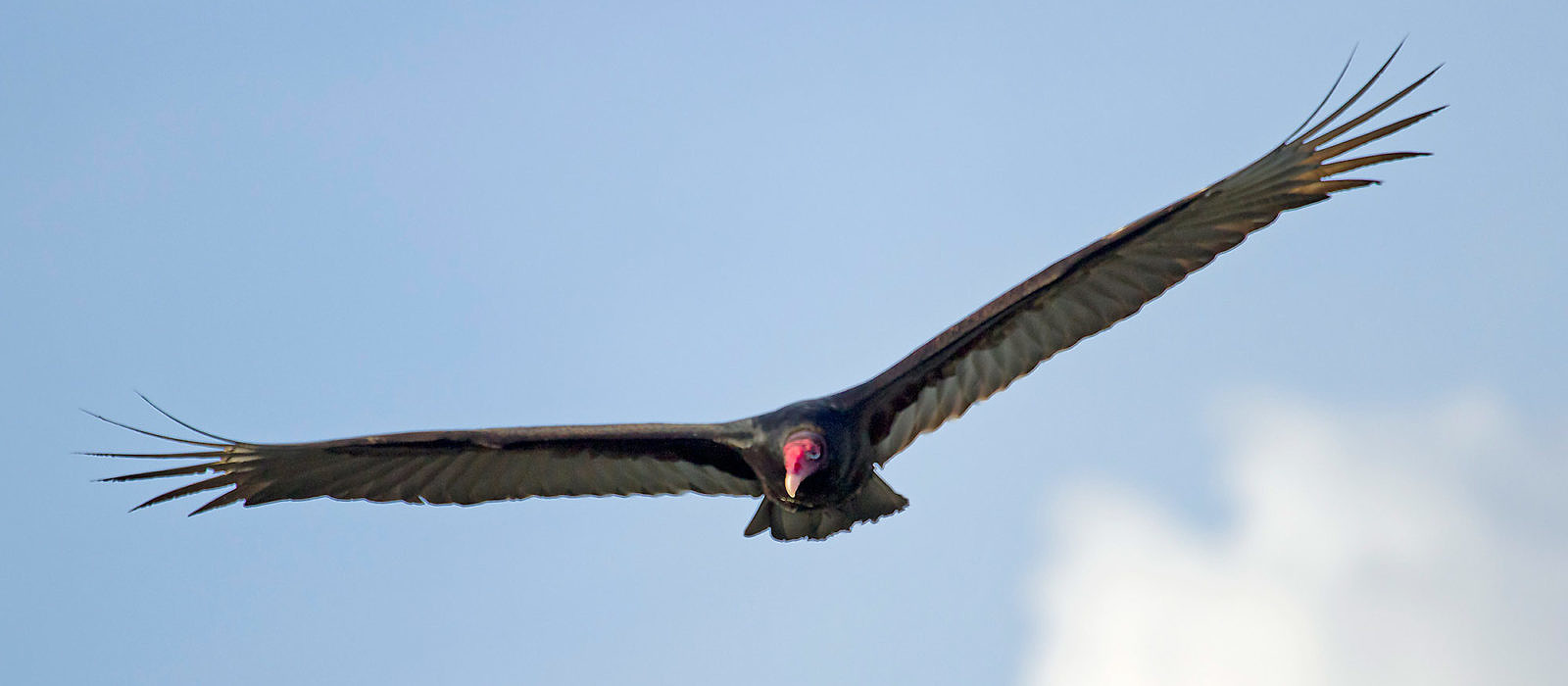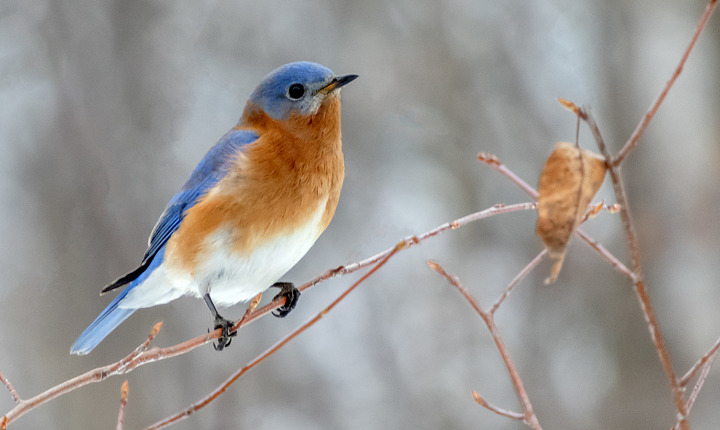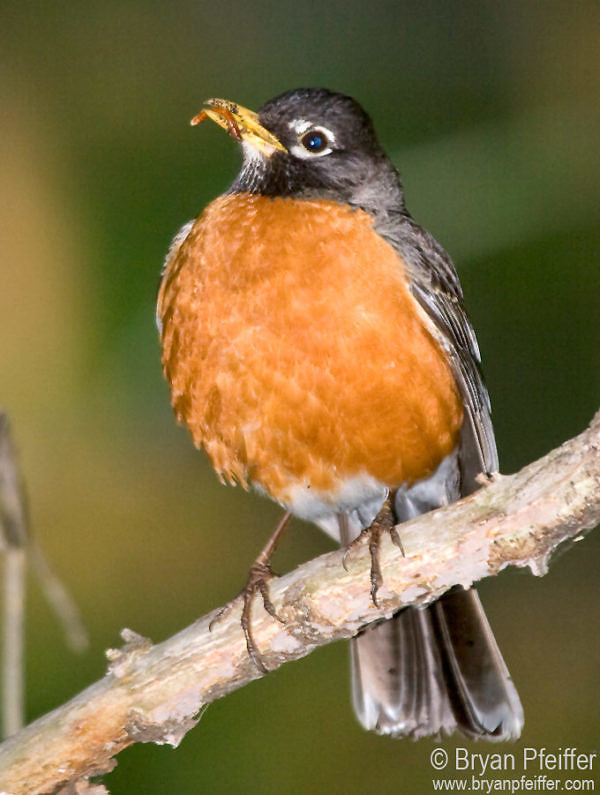
Migration’s Misfits
Pick your favorite sign of spring: squirrels mating, mud oozing, maples flowering. Mine is a vulture soaring. The promise of a new season is a naked, ruddy head gliding in on big wings — even in February.
But more than being a vernal messenger, the Turkey Vulture is an avian iconoclast. It topples simplistic notions of migration.
We can usually predict, within days, the return of many species from far away: Bicknell’s Thrush (from the Caribbean), Warbling Vireo (from Mexico and Central America), or Bobolink (from South America). These are complete migrants; all of them left us last fall, and they return, predictably, each spring. The Cliff Swallows returning on schedule to San Juan Capistrano? To tell you the truth — no big deal.
But a number of species migrate on the cheap. These partial migrants fly south for winter, but not too far south. And certain partial migrants are variable: some of them head south while others move only short distances or even remain in the breeding region.
The Eastern Bluebird is an example. One of America’s most elegant songbirds is a lovely mess when it comes to winter distribution and migration. Consider its range map (courtesy of the Cornell Lab of Ornithology’s exquisite All About Birds site). To be sure, most bluebirds left the northern portions of the breeding range last fall. Yet a few hardy individuals regularly pass the winter in places as cold as Vermont or north of the Great Lakes.
The same goes for American Robins, Red-winged Blackbirds, and other “harbingers of spring.” Overall, yes, these species migrate. But among them we find mavericks in the cold, particularly during winters with abundant food supplies.
Migration isn’t necessarily an easy option. Falling temperatures and dwindling food resources do drive birds southward in fall, but migrating to avoid winter’s hardship is itself risky. Beyond the caloric demands of flying south (and then north again in spring), stopover sites along the way might hold unreliable food or unfamiliar predators. Some migrants lose prime wintering sites altogether — to storms, for example, or commercial development. Imagine yourself on a plane for Brazil, arriving to find that your airport has vanished.
But there’s another reason to stay put. It’s a guy thing. Among some partial or short-distance migrants, males linger farther north than females. In winter or early spring, for example, you will probably find more males among groups of Dark-eyed Juncos or American Robins (among the reasons the robin is a badass bird). In some species, the relative abundance of females increases steadily southward.
A classic explanation for the overabundance of males in winter is that turf matters. By migrating short distances, or by never leaving, northern-residing males get dibs on the better territory. So, counterbalancing that risk of death in the cold is the benefit of breeding success in spring. And the winners’ offspring might themselves inherit the fitness to stay north next winter.
It’s a convenient hypothesis, natural selection in action. But is it true? Beware of easy answers. Perhaps males are more abundant in the north simply because they out-compete females for scarce food resources. In the struggle for existence, males will indeed be aggressive toward females over food. Fatter, larger males fare better in the cold.
It’s likely that all these explanations fit in one way or another, which brings me back to the Turkey Vulture, a partial migrant whose northernmost members retreat south in the fall. I expect to find robins, bluebirds, and juncos here in Vermont each winter, but rare are Turkey Vultures here in the cold. They winter in southern New England and points south.
But around the middle of February, as the sun drags itself higher above the horizon each day, before Red-winged Blackbirds sing “honk-a-ree,” before American Woodcocks begin their frenetic courtship flights, and before Eastern Phoebes arrive in the yard, a Turkey Vulture usually drifts north on teetering wings and a balmy breeze. (Here’s a map of Turkey Vulture sightings since February 1. [you’ll need an eBird account to see it].)
No, it isn’t spring. Sorry, not yet. But the vulture, searching for something dead, is nevertheless a reliable emissary for a season’s rebirth.



You’re most welcome, Amy. Sounds like quite sight! Perhaps they’re staging for migration.
Hi Brian! I have some giant white pine behind me in Montp and the Turkey vultures like to perch or sleep? On them while they stare at me.hope they are not considering if I’d be tasty. Tonight I was outdoors as heard the sound if wings.. sand more wings.. and more soon there were about 40 swooping over me and around the area where I live. No
Meat here. They circled for a while and finally headed southwest. They are so beautiful. I’m glad they’re not the kind of vultures that will attack and kill animals.
Thanks for the info, Brian.
Amy Handy
Thanks for that, Jean. Wow. So probably around early March for those?
Hi Bryan,. Each year hundreds of turkey vultures arrive on rooftops in a specific neighborhood in Manchester, CT. One year there were so many settling on a tree that the tree appeared to be in full bloom. I was with my grandson. We were both in awe. Unfortunately, I did not have my camera/cellphone. Thanks for the extra info. Jean C.
Oh, don’t you HATE it when vultures vomit on your shoes? I hate it when that happens! But, yeah, SO CUTE! 🙂
(This is precious! Thanks, Suzanne!)
I can confirm the puking. Lester the Limping Vulture, who lived at Horsehead Wetlands Center on the Eastern Shore in Maryland, vomited on my shoes. I still thought he was cute.
Wow — this is great (and pungent) reading, Robert! I’ll bet that was an encounter you’ll never soon forget. Turkey Vultures, I think, also puke on intruders. So it could have bee much more, uh, aromatic! 🙂
Yep, in the CT River Valley and the Champlain Valley — often here all winter. What a treat. My pal Joanne Russo has them in Saxton’s River now.
Speaking of turkey vultures, I was out looking for basking early spring rattlesnakes in the Blue Hills near Boston, in a jumbled pile of large granite rockfalls, when I found a “cave” formed by a large fallen boulder. I stuck my head in there and spied a vulture egg on bare rock–an elongated ovaloid with irregular purplish-brown blotches and markings. As soon as I poised my camera for a photo, I was overcome with the most horrible stink of rotten meat I had ever smelled in my life. I was out of there so fast! I looked up, and soaring above was one of the future parents. Had I fainted from the horrible smell, I have no doubt what its next meal was going to be. I was especially surprised at how early the vultures were nesting, before any leaves had come out on the trees, but unfortunately I didn’t record the date.
Thanks for your celebration of nature’s garbage disposals!
For the last few years I’ve photographed Blue Birds in Wallingford, VT all during the winter. It seems the “family” sticks around all year. What a cheery sight on a cold winter day seeing them feeding along my walk route.
Early February, it’s the frozen depths of winter. Coldest sound in the universe: the icy clanging of ropes on a flagpole in Jan. or Feb. Brrr! But only one or two weeks later, the cardinal starts singing in earnest…I know spring is coming!
Ah, you’ve made my day, Susan. 🙂
bryan,
you’ve changed my attitude toward turkey vultures. thanks for that.
Hi Suzanne, I can recall when Turkey Vultures were rare in Vermont — oh, about 30 years ago. Warmer winters, the interstate (with more dead things), perhaps some other factors probably account for their increase over the decades. I’m glad they’re here!
I saw two big turkey vultures close up by the road yesterday as I was heading back toward Craftsbury from Hardwick. I hadn’t realized how brown they are. My very old birding book still shows this area as out of range for them.
I have not seen any groundhogs yet they must be sleeping in here in NW In they are usually out by now.
I sort of felt that way when I watched the movie Jurassic Park — humans as prey rather than predator, for a change.
When our son, whose now a 29 year old birder, was 5, he came running in from the yard crying, saying a huge bird had flown close over his head and he thought he was going to be carried away by it. From his description we realized it was a turkey vulture, probably checking out our chickens on a spring day. It gave Colin a new appreciation for what it feels like to be prey!
I have seen them in early March in the snow
Hi Ann, Yes, as it turns out, Turkey Vultures moved in bigtime, oh, about 30 years ago. I could be off on that. But I also suspect that gentler climate and perhaps the interstate highway system (and its roadkill) helped pave the way for them to move out from southern Vermont and the warmer valleys.
Yep, Groundhogs in the snow. I like that!
Growing up in Northern Vermont, I never laid eyes on a Turkey Vulture (or a possum) until I moved slightly south, to Addison County in the late 80s. Now, back to my roots, up north, they are here regularly and I have seen some this winter.
I agree on Turkey Vultures are Ground Hogs I quit counting Robins years ago there year round now